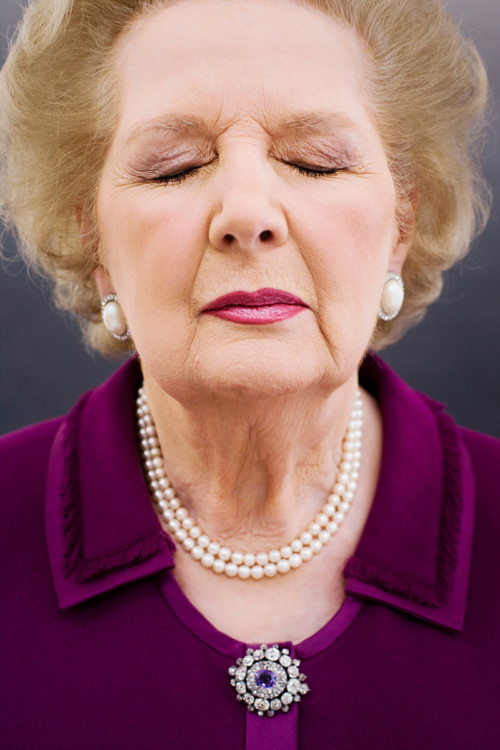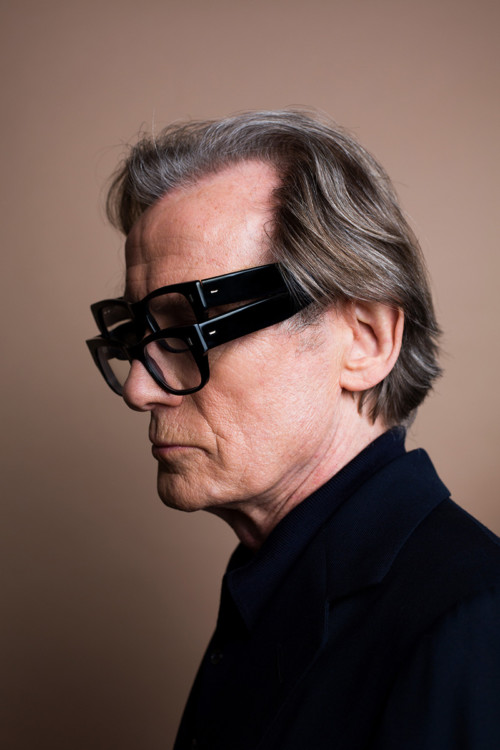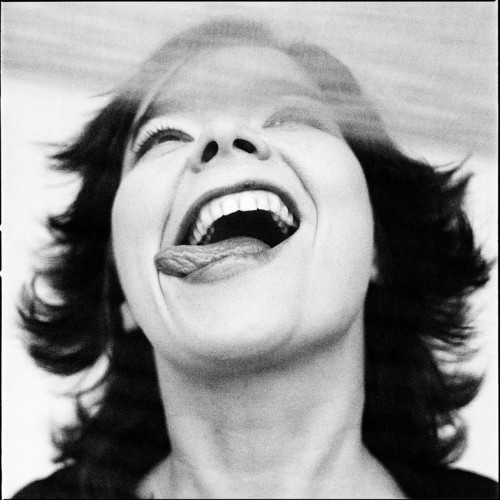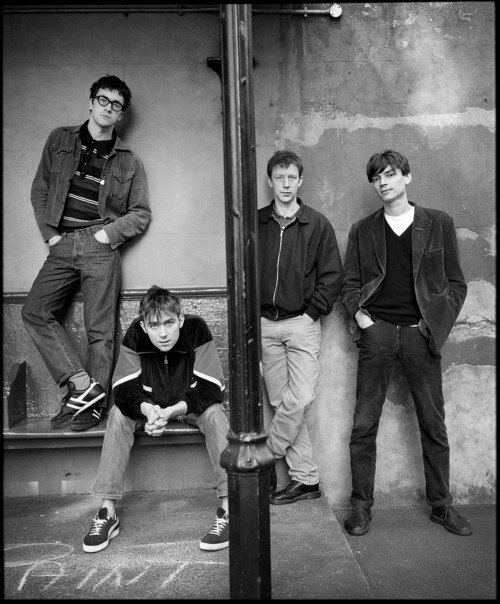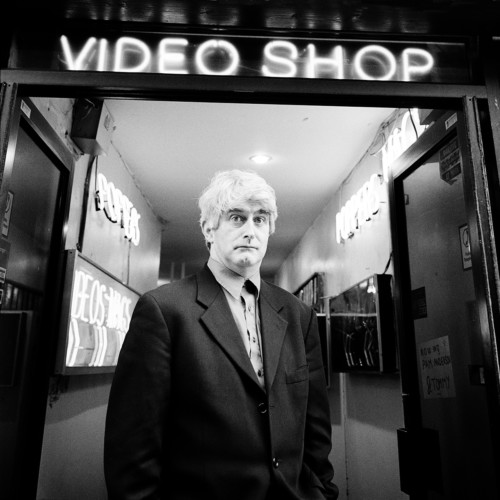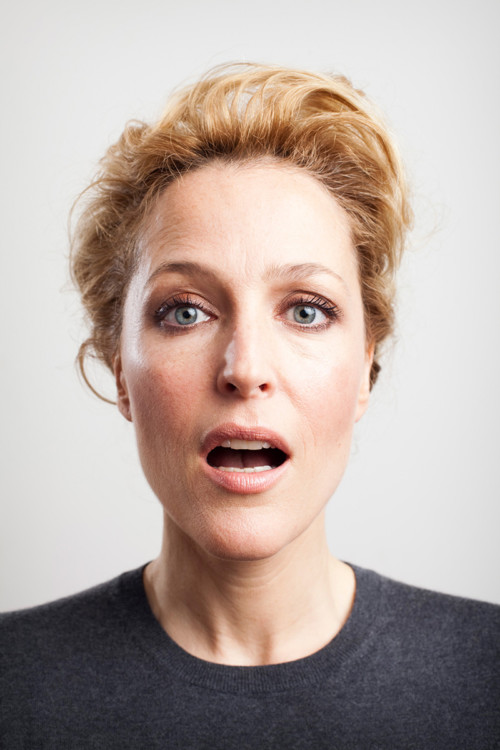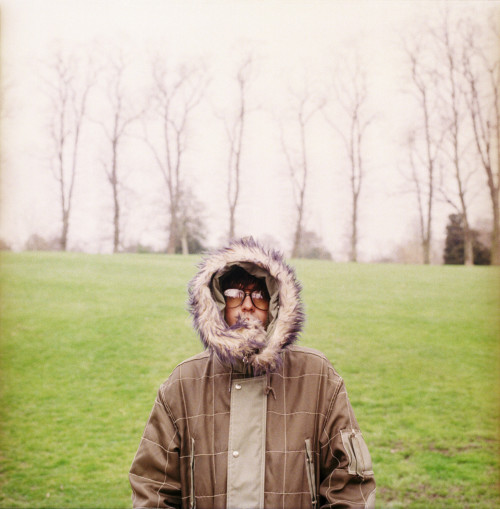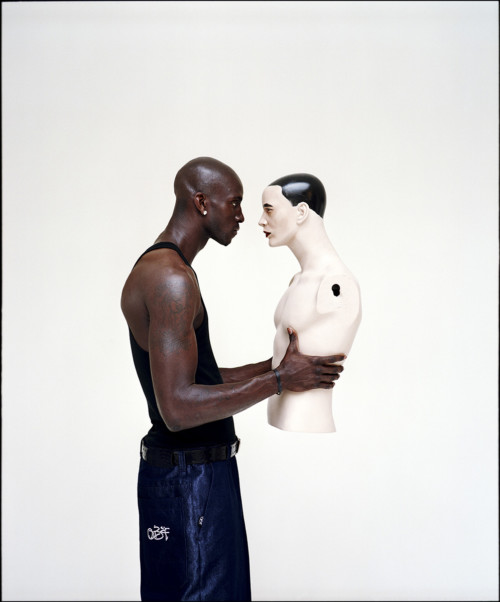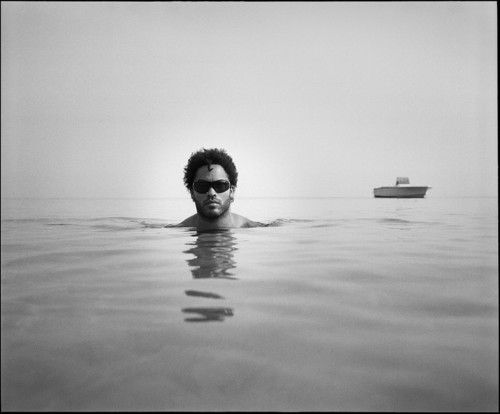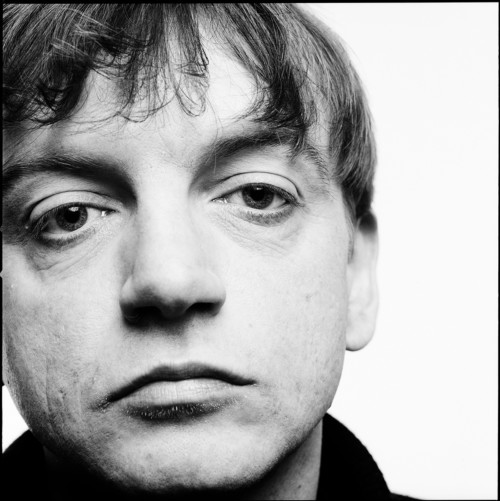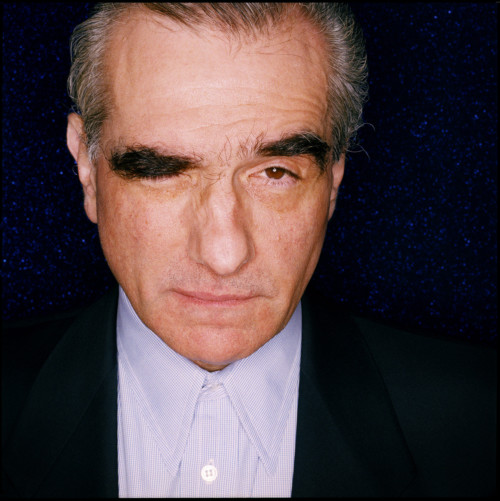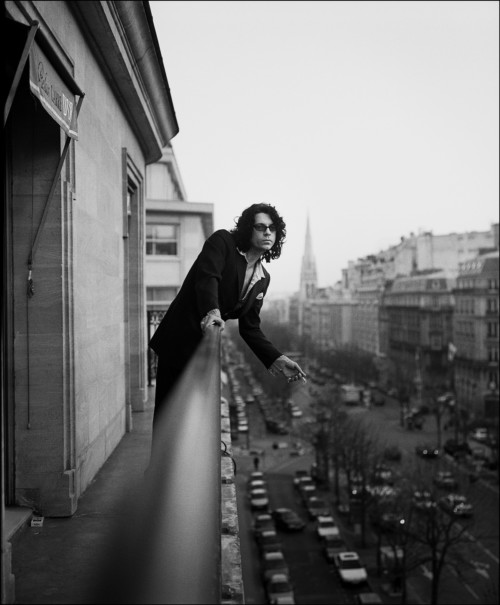-
Harry Borden: Baroness Thatcher
£ 625 – £ 5,800Baroness Thatcher photographed at The Lemonade Factory studios, Battersea, London, 9 October 2006 Harry recalls the shoot: " Like her or loathe her, Margaret Thatcher was a major figure in British life in the 1980s. She changed the country’s cultural and political landscape. My career as a photographer didn’t really take off until the early 1990s, by which time her political career was over. I never got the opportunity to photograph her in her pomp and glory, and thought I had missed my chance. Then in October 2006, I got a call from Time magazine. The editor was planning a special edition – 60 Years of Heroes – and my commission was to photograph Baroness Thatcher. Although by then I had photographed many famous people, getting this job was a brilliant moment in my career. During our meeting she held my hand and asked me several times, "When are the other people arriving?" She clearly thought I was shooting all the 'Heroes' at the same time, as if Mikhail Gorbachev, Nelson Mandela and her would be rubbing shoulders in this shabby studio in Battersea (picked because of it's proximity to her home). At the end she looked puzzled and said to me, “The others never came...” She was no longer 'The Iron Lady'. Just a once-formidable person succumbing to human frailty as we all eventually do. The ‘eyes-closed’ portrait was one of the last frames in the shoot and was taken using natural daylight. I hadn’t planned it. She just blinked and the idea for the picture came into my head. I asked her just to close her eyes. Even when I was taking the shot, I knew it was going to be an iconic picture. I used my Canon EOS-1Ds Mark II with a 50mm lens, with the camera on a tripod. The shoot lasted about 12 minutes. What makes this portrait special? I think when you get someone to close their eyes, they’re in a position where you can observe them. They seem vulnerable. Margaret Thatcher had so much dynamism and power, so when you see a photo of her in old age, and with her eyes closed, there’s something absorbing about looking at her and reflecting on how she affected our lives." Available in a choice of physical size options. Please ask for framing options. Please allow 2-3 weeks between order and delivery for an unframed photograph. Framing adds 2-3 weeks. -
Harry Borden: Bill Nighy
£ 625 – £ 5,800Bill Nighy photographed in the Sutherland Suite at the Connaught Hotel in Mayfair, London, February 2014 Harry Borden recalls the shoot: "Bill Nighy’s roles in films including Love Actually have made him one of Britain’s best-known actors. His distinctive glasses are an integral part of his brand. In February 2014, he was about to appear on BBC TV in David Hare’s political thriller Turks & Caicos, the second part of the acclaimed Worricker Trilogy. As part of the publicity drive, he was being interviewed for Spectator Life magazine and I was commissioned to shoot the portraits. The venue was the Sutherland Suite at the luxury Connaught Hotel in Mayfair. As always, I arrived at the location early and looked around the suite for good places to photograph him. I aimed to shoot with daylight most of the time, but also brought my lights and a tobacco-coloured backdrop. I’m always happy to do an environmental portrait and the hotel room suited that approach, but I had the backdrop just in case the hotel room was too cluttered. I also have black and white backdrops but felt they would be too sterile; the tobacco-coloured one was different and wouldn’t jar with what he was wearing. Nighy arrived, looking magnificent in a classy suit. He was very charming and erudite, and was very clear about how he wanted to appear. As the shoot progressed, I remember learning a lot about tailoring from him because he was talking in detail about design features he did and didn’t like in suits. I wanted to take a classic portrait, something that would stand out. I put up the tobacco-coloured backdrop and did a few pictures. Then I looked more closely at his glasses—and noticed that by chance we were wearing exactly the same glasses. They were a vintage pair with black frames, made by Cutler and Gross, and I suddenly realised I was missing a potentially interesting opportunity to mess with his brand. At that point I suggested he wear both my glasses and his at the same time. The idea was influenced by the photography of Asger Carlsen, who takes photographs that look like everyday pictures, but which are digitally altered to look strange or surreal. I was trying to do something similar but in-camera. I also decided to shoot him in profile, without showing his eyes. I was photographing him more as an object than a person – a familiar object, but one that has something unusual about it. I took the shot with my 50mm lens, with settings of 1/100sec at f/5, ISO 100. I lit him using a softbox. I think the other people on the shoot thought I was going a bit off-piste when I took this picture. It was one of those occasions when I had got all I needed for the commission and I wanted something for myself. Realising we had the same glasses was a serendipitous moment – if I’d planned it beforehand and asked a stylist to find the same glasses, they would have found it impossible. I was really pleased with getting this completely unexpected picture. It wasn’t used by Spectator Life but was displayed in the 2014 Royal Photographic Society International Print Exhibition. This one has a twist and that’s why I have it in my portfolio." Available in a choice of physical size options. Please ask for framing options. Please allow 2-3 weeks between order and delivery for an unframed photograph. Framing adds 2-3 weeks. -
Harry Borden: Bjork, Reykjavik (1998)
£ 625 – £ 5,800Bjork photographed in Reykjavic, Iceland, on 24 September 1998 Harry recalls the shoot with Bjork: "Visually sophisticated and engaged in the process, it's not enough to get just a 'good' portrait of Björk. I'm sure every photographer who takes her picture has the image in their portfolio. This was from a memorable trip to Iceland with Lynn Barber for the Observer. Although I was only allocated 20 minutes, this photograph was lucky enough to win a World Press award in 1999. It was shot with my Hasselblad on Tri-X film. At the time I was experimenting with a lab that offered to process the film for next to nothing. When I scanned the negative I thought it looked a bit grainy but put any doubts to the back of my mind. After I received the fax from the World Press Photo, (it was before the ubiquity of email) I instructed my printer to make a beautiful analogue bromide. A few days passed before I got a panicked call from the lab explaining the neg was impossible to work with. They actually said it looked like it had been developed in Urine. Photoshop and a digital output came to the rescue but I learned a valuable lesson; Never economise with your work." Available in a choice of physical size options. Please ask for framing options. Please allow 2-3 weeks between order and delivery for an unframed photograph. Framing adds 2-3 weeks. -
Harry Borden: Blur
£ 625 – £ 5,800Blur photographed on Beaufort Street, Chelsea on 10 March 1994 Harry Borden recalls the session: "This was a shoot for Select, the colourful Britpop magazine of the 90s. First I took individual portraits in a studio behind the Bluebird restaurant on the Kings Road in Chelsea. It’s hard to believe now but the plan was to take these individual portraits and in post-production, colour each band member as a different race. I guess they wanted to illustrate the post-modern, multiracial Britain that the band celebrated. Thankfully the ‘black-face’ idea didn’t happen and they used this picture. After the studio session, I took them for a walk down Beaufort Street towards the river. We strolled into a Victorian tenement block and I found this strange lean-to. ‘Wet paint’ was written in chalk on the floor and there was an inconvenient streetlamp obscuring my view but I think it worked as a location. I used the post to make two photographs in one, dividing the group into its constituent parts. I often don’t know what I’m looking for but intuitively know when I’ve found it. When we got back to the studio, the mood was celebratory as we were shown the artwork for Parklife, their third studio album with the snarling greyhounds. The headline in the magazine declared them the best British band since the Smiths and 25 years on, maybe that doesn’t seem too hyperbolic." Available in a choice of physical size options. Please ask for framing options. Please allow 2-3 weeks between order and delivery for an unframed photograph. Framing adds 2-3 weeks. -
Harry Borden: Dermot Morgan
£ 625 – £ 5,800Dermot Morgan photographed in Soho, London in February 1998 Harry Borden recalls the shoot:"In February 1998, I was commissioned to photograph Dermot Morgan by The Sunday Times magazine. During the previous three years, the actor’s brilliant comic performances as the star of TV comedy series Father Ted had made him a household name. I was a big fan of the series and was looking forward to the shoot, but despite my determination to come away with strong pictures and my enthusiasm for the subject, this shoot didn’t quite go to plan. I was usually allowed to decide on how I was going to photograph my subjects, but The Sunday Times had a specific idea for this shoot. They wanted colour shots of Dermot outside some sleazy establishments in London’s Soho. He was meant to strike some comic poses looking as if he had been caught out visiting the area’s strip joints and massage parlours, adopting a persona somewhere between his own and Father Ted Crilly’s. I realised from the outset that this idea could be problematic: the people who operate these businesses were not likely to appreciate me using them as a backdrop. I was wary of the situation and tried to prepare, but at the time my wife had recently given birth and I was caught up in the maelstrom of caring for a baby and sleepless nights. It wasn’t until I had driven from my home in Hackney to Soho that I realised I’d left all my camera gear in my hallway at home. I hired a portable flash unit that I was going to use for fill-in flash. I tried to hire a camera from the same company, but they didn’t have any at the Soho branch. Trying not to panic, I went straight to a local Jessops and bought a second-hand Fujifilm 6x9 rangefinder. However, when my assistant and I connected the camera to the flash set-up in a Soho car park, we heard a ‘pop’, the flash started smoking and an acrid burning smell floated across. After that, it wouldn’t work at all. By then, the cold, drizzly afternoon was beginning to get dark. We were also running late. So, on the spur of the moment, I decided to do the entire shoot in black & white. We met Dermot at his management company office in Soho. I covered up my technical problems when I met him, but was inevitably feeling stressed. Dermot himself was a nice man, very kind and compliant, and willing to go along with the idea of doing the shoot around Soho. The shoot lasted a frantic 20 minutes. There’s only so much you can do when you’re being shooed away from one sleazy strip club or massage parlour after another. By the time I shook hands with Dermot and said goodbye, it was beginning to rain but I was hopeful I’d managed to dig out a result, largely due to Dermot’s expressive features. Just 10 days afterwards, I heard the shocking news that Dermot had died from a heart attack, aged 45, a day after he finished filming on the third series of Father Ted. It was so sad. My shoot was the last he ever did. When the photos were published in The Sunday Times, instead of illustrating a light-hearted feature, they were part of Dermot’s eulogy. Shooting in black & white had been forced upon me by my circumstances, but it gave the images a poignancy and authenticity they wouldn’t have had in colour." Available in a choice of physical size options. Please ask for framing options. Please allow 2-3 weeks between order and delivery for an unframed photograph. Framing adds 2-3 weeks. -
Harry Borden: Gillian Anderson
£ 625 – £ 5,800Gillian Anderson photographed in the basement at 6 Fitzroy Square, London, 10 July 2012 Harry recalls the shoot: "One of my most enjoyable shoots in recent years took place when I photographed the movie, TV and stage actor Gillian Anderson. She is best known for being FBI agent Dana Scully in cult sci-fi series The X-Files. When I photographed her, in July 2012, I was aware of the series but had never watched it. This was a good thing, because it meant I wasn’t intimidated by her fame. I was commissioned to shoot her portrait by The Sunday Times, which was running an interview with her to coincide with her role in the film Shadow Dancer. The newspaper had hired a location for the shoot: Six Fitzroy Square, an 18th century town house in London’s Fitzrovia. It had a lot of character and offered a range of interior backgrounds as well as an outside area. Sometimes when I’m photographing actors I direct them as if they are on a film set. I ask them to imagine they are in particular situations and then photograph their expressions. With Gillian, for example, I did things like asking her to look startled, or to imagine she was seeing God in the sky. She was brilliant and really got into the idea. This was when I took my favourite picture of the day, in which Gillian has her mouth open as if she’s doing a silent scream. The image was shot against a white wall in the basement. I used two flash heads to light Gillian. One was a raw flash head, without any modifiers, which I used to backlight her. I put it in an adjacent room and used the door frame to flag it off slightly. I used the other head with a softbox, positioned to the right of my camera. I was shooting with my Canon EOS 5D Mark II and a 50mm lens. The picture did well in various competitions and was shortlisted in the The Royal Photographic Society International Print Exhibition 2013. It also generated much discussion on Twitter, particularly among women. They were saying they liked the picture because it wasn’t retouched and showed her as a woman in her mid-40s, rather than trying to make her look younger. Looking at it now, the light is quite hard but it’s still flattering. I like the simplicity of the picture and its enigmatic quality. She appears vulnerable, as if momentarily surprised, and it seems like you’re witnessing a moment. In reality, of course, the moment was created, but its ambiguous nature means that everyone can bring their own interpretation to it." Available in a choice of physical size options. Please ask for framing options. Please allow 2-3 weeks between order and delivery for an unframed photograph. Framing adds 2-3 weeks. -
Harry Borden: Jarvis Cocker, London (1998)
£ 625 – £ 5,800Jarvis Cocker photographed in Waterlow Park, London, March 1998 Harry Borden recalls the session with the Pulp frontman: "I took this photograph in March 1998. By that time Pulp had recorded two major hit albums: His ‘n’ Hers (1994) and Different Class (1995), which featured several iconic singles including ‘Common People’. By this stage Jarvis was a superstar, established as part of the cultural landscape and featured frequently in the newspapers. I was doing the shoot for the Observer and he was being interviewed by journalist Lynn Barber at her house in Highgate, London. Using my Hasselblad, I took some pictures around the house, including in her daughter’s bedroom. The original idea was to move on and shoot some pictures in Highgate Cemetery, but I felt it wasn’t really appropriate for him as he wouldn’t have fitted into that Gothic environment. Instead we went to nearby Waterlow Park and shot more images there. Towards the end of the shoot I asked him to zip up the hood of his snorkel parka coat, so only his big, reflective glasses were visible. I liked the idea of being confronted with someone famous and playing with the fact that it’s really them. I was concerned his face would be too dark, so I used a handheld exposure meter to take a reading of the light going into the hood. By exposing only for his face, the line of trees in the background was blown out because it was overexposed. The result was a graphic and intriguing picture. It is possible that I had David Bailey’s portrait of Mick Jagger in a fur hood in mind when taking this picture. Rather than just copy a famous image, I try to take an idea and use it as a basis to create something that is different and original. This way, rather than getting a pastiche, you get a genuine moment. The line of trees in my picture gives it a kind of municipal ordinariness that suits Jarvis’s style and takes it on to another level. " Available in a choice of physical size options. Please ask for framing options. Please allow 2-3 weeks between order and delivery for an unframed photograph. Framing adds 2-3 weeks. -
Harry Borden: Kevin Garnett
£ 625 – £ 5,800Kevin Garnett photographed at Red Earth Studios, London, 2001 Harry Borden recalls the shoot: "Shooting portraits of sports stars is often difficult. Unlike photographing members of a pop band, for instance, where they recognise a shoot is part of the publicity process, sports stars aren’t usually relying on photographers to promote them. For them, a shoot isn’t exciting or a novelty, it’s a pain in the neck. Therefore, in my experience, you’re often relying on their innate personality to get the pictures you want. Photographing basketball player Kevin Garnett, back in 2001, was a notable exception. That was partly because he’s a good-natured person, and partly because he was doing the shoot for an article linked to the launch of his own clothing brand. Kevin Garnett is a huge name in American sport. He played for NBA teams for 21 seasons, between 1995 and 2016, and is considered one of the sport’s true superstars. I was commissioned to photograph him for American GQ magazine, so there was a good budget and I had the benefit of working with a stylist. I asked the stylist to provide some props that reflected the theme of making clothes, such as some tailor’s dummies and a pair of tailor’s scissors. The idea itself wasn’t particularly original, but it led to what I think is a very interesting portrait. The shoot took place in Red Earth Studios in London, which had a tall ceiling and a skylight which gave wonderful north light. I always got really nice results there, so I was pleased it was available when I got the commission. If you’ve got good available light and a subject like Kevin Garnett, you’re already halfway there. Photographing Garnett was an extraordinary experience, partly because of his physical presence. He’s very much the alpha male, and at the time I photographed him he was just 25 and at his physical peak. He’s just under 7ft tall and very athletic, but perfectly proportioned – just much bigger than most people. His hands were huge and his arms were similar in girth to my thighs. I’m just under 6ft tall, but that extra foot makes a big difference and I remember having to stand on a chair to shoot at his eye level. However, he was very easy-going and playful, like a big puppy – at one point he got me in a headlock while fooling around – and was happy to do whatever shots I requested. For me, the best shot came completely spontaneously, and mainly arose from Garnett’s playfulness. Most of the dummies we had were quite conventional, but one of them, which I think was possibly from the 1930s, had a weird look. At one point, Garnett picked that dummy up and turned it to face him. I took several shots, some with him looking towards the camera, others with his mouth open. But one shot, showing him staring intently at the dummy’s face, had something special about it. My reading of that picture is that there’s an element of homoeroticism about it: one man is staring out another man in a very overt way. But it also has an interesting racial dynamic: the white dummy has an angry and hostile expression, yet it’s completely powerless. I wasn’t consciously aware of these elements when I took the shot and they’re the kinds of things you can only notice after taking a picture. This is the sort of moment that gets you really excited as a photographer. I really love that picture, it’s definitely in my top ten favourite images from my commissioned portraits. However, I’m pretty sure it wasn’t used in the American GQ article because it didn’t fit the idea of it being a fashion-led shoot. More contrived images can go down well with a magazine in the short term, but they don't stand the test of time, because on some level they lack authenticity. Sometimes, a great picture just happens in front of you and you just have to be alive to it." Available in a choice of physical size options. Please ask for framing options. Please allow 2-3 weeks between order and delivery for an unframed photograph. Framing adds 2-3 weeks. -
Harry Borden: Lenny Kravitz, Bahamas (1998)
£ 625 – £ 5,800Lenny Kravitz photographed in The Bahamas, 1 July 1998 Harry Borden remembers the shoot with Lenny Kravitz on 1 July 1998: “This was taken in the Bahamas. I had first photographed Lenny seven years before for the NME. That occasion was his first UK interview and he and his manager came to my flat in Bethnal Green. We remembered the shoot and it was good to reconvene in such an exotic location. He was making a video so there was a lot of hanging around. We stayed at the Compass Point Beach resort, and our bedrooms were on stilts next to the beach. It was basically a holiday punctuated by the shoot. Although reluctant to be shot without his sunglasses, he was beautiful, cool and very easy to photograph. Eventually I got him in the sea and after taking the obligatory statuesque images of his perfectly proportioned body, I shot this picture. The boat on the horizon and him lower in the water, the image had narrative and a sense of mystery. I shot this on a Fuji 6x7 Rangefinder on Tri-X Film. Sometimes less is more.” Available in a choice of physical size options. Please ask for framing options. Please allow 2-3 weeks between order and delivery for an unframed photograph. Framing adds 2-3 weeks. -
Harry Borden: Mark E Smith
£ 625 – £ 5,800Mark E Smith photographed in his room at the Pembridge Court Hotel, Notting Hill, London on 8 March 1993 Harry recalls the shoot: “Confrontational and curmudgeonly, Mark E Smith could be intimidating presence. It was a skill to get him to put down his cigarette and pint of lager and look at the camera. He was staying at the Pembridge Court Hotel in Notting Hill and I set up a little studio in his room.I did three shoots with him over the years and always enjoyed is abrasive mischievous humour." Available in a choice of physical size options. Please ask for framing options. Please allow 2-3 weeks between order and delivery for an unframed photograph. Framing adds 2-3 weeks. -
Harry Borden: Martin Scorsese
£ 625 – £ 5,800Martin Scorsese photographed at The Dorchester Hotel, London,March 1998 Harry Borden recalls the shoot with the acclaimed director: "In March 1998, Martin Scorsese was in London to appear at an event held by The Guardian. Scorsese was 55 at the time of the shoot and was firmly established as one of the major directors of his era for films such as Taxi Driver, Raging Bull, Casino and The King of Comedy. He’s a genius and undoubtedly one of my cinematic heroes. The Guardian’s sister paper, The Observer, had a one-hour slot with him, during which he was to be interviewed by the journalist William Leith. Afterwards I would have about ten minutes to shoot a portrait. The shoot was going to take place in a suite at the Dorchester Hotel in London. Publicists repeatedly booked The Dorchester for interviews, so I could easily have ended up with lots of people against the same kind of background. Therefore I always took along either a roll of material or my black, white or grey backdrops. They provided a simple and plain alternative to a rather chintzy hotel environment. Prior to this shoot, I went to Brick Lane in East London, where,at that time, there were a lot of fabric shops. I used to buy three metres of fabric and use it as a backdrop, which was much cheaper than buying a roll of Colorama paper. On this particular day, I found some sparkly blue material which had colours and textures that I thought might work well with a ringflash. While the interview was going on, I set up my equipment at the other end of the suite. I had loaded my Hasselblad CM (fitted with a 120mm lens) with a roll of Tri-X black & white film, and as Scorsese was saying goodbye to William Leith I took some informal shots of the director. I showed him a small portfolio of my work so he could see the kind of images I produced. He was quite macho; very smart, straight-talking and quick-witted; but friendly and jovial. In that situation, it was an advantage that I had grown up with a Jewish-American father; he reminded me of my dad and so I didn’t feel intimidated. I just asked him what I wanted him to do. Scorsese was apologetic that we had so little time, and I think he would have given me a lot more time if he had been able to spare some. When he saw the roll of dark blue, sparkly material, he thought it was funny and knowingly said, ‘I see you’re going for the Vegas look.’ His movie Casino, released only a few years earlier, had been based in Vegas so it seemed appropriate. Sometimes, when I have very little time for a shoot I’m panicked into being more upfront about what I want from a sitter. I was desperately trying to find an impactful picture, and I thought the most striking thing about his appearance was his amazing set of eyebrows. So, on the spur of the moment, I decided to ask him to wink as it made his eyebrows even more prominent. It’s not something I do often, but I have occasionally asked people to wink because it does make a good picture. I shot some with his left eye winking and some with his right, but the picture shown here worked best. I only had time to shoot three rolls of film before Scorsese had to go: one roll of black & white at the end of the interview, then two rolls of colour; one of him at three-quarter length then a roll of head shots. The ‘wink’ picture has subsequently been syndicated all over the world, while the others were hardly published at all. It was recently used on a t-shirt for an event in Amsterdam. I think it’s one of the best ‘wink’ pictures out there, because he’s so cool." Available in a choice of physical size options. Please ask for framing options. Please allow 2-3 weeks between order and delivery for an unframed photograph. Framing adds 2-3 weeks. -
Harry Borden: Michael Hutchence, Paris (1997)
£ 625 – £ 5,800Michael Hutchence pauses for a cigarette on the balcony of his hotel on the Champs Élysées, Paris, March 1997 This portrait of Michael Hutchence has become one of Harry Borden's best known images. Harry recalls a memorable week spent with the tragically short-lived INXS singer: "In March 1997, I was asked by The Observer to photograph him in Paris, where he was promoting INXS’s latest single, "Elegantly Wasted". It was a great commission and involved me staying at a really nice hotel on the Champs-Élysées for a week – where Hutchence was also staying. However, as we had to fit the shoots around him doing interviews and performing on pop shows, there was a lot of waiting around. I saw him perform the new single over and over again. He was, at that time, 37 years old and had been in the business for more than 20 years, but was still a mesmerising performer and had a lithe, panther-like quality. He had a great voice and his on-stage presence helped make the band really successful. One day I was out on the hotel balcony, trying to keep out of the way while he was doing a television interview in his room. At one point, he came out to have a cigarette. I had my camera with me and he just posed for me briefly, without either of us actually acknowledging that he was posing. As he looked past me, into the distance, his mind seemed to be somewhere else. It was a genuine moment. Having got to know Hutchence quite well during my week in Paris, it was a shock when, just nine months later, he was tragically found dead in a Sydney hotel room. The official verdict was suicide. The following year, the balcony shot was shortlisted for the John Kobal Portrait Award, and the Australian National Portrait Gallery contacted me to say they wanted it in their collection. Later, some of my other Michael Hutchence images featured on the sleeve of his posthumously released solo album. Since then, the balcony portrait has taken on a life of its own and has become one of my best-known photographs. The fact that Hutchence had died in a hotel room has undoubtedly given the portrait added poignancy. " Available in a choice of physical size options. Please ask for framing options. Please allow 2-3 weeks between order and delivery for an unframed photograph. Framing adds 2-3 weeks.

